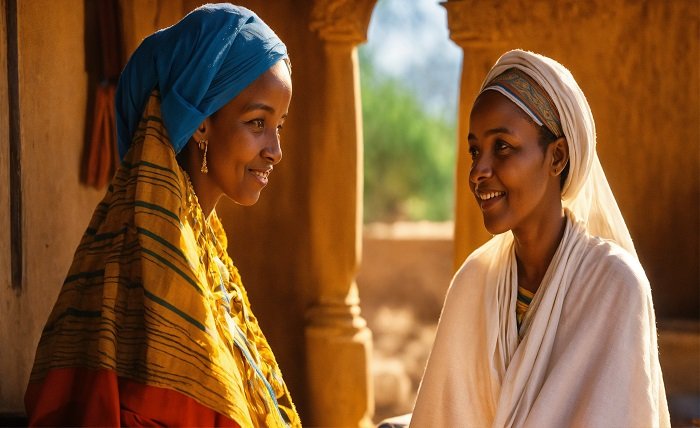Exploring Cultural Jewelry Traditions for Kids Around the World

Jewelry holds deep cultural significance, especially for children, symbolizing heritage, milestones, protection, and blessings. Around the world, unique jewelry traditions celebrate and honor the youngest members of society.
Symbolic Beginnings in India
India is famous for its vibrant jewelry culture, and this tradition shines brightly in childhood rituals. Many Indian families gift their newborns gold or silver bangles, called “kadas” or “kangan.” These little bracelets aren’t just symbols of wealth or status; they are believed to protect the baby from negativity and bring good health.
Another common tradition is the “nazariya,” a black beaded bracelet or anklet. Worn by babies and young children, it is thought to ward off the “evil eye” (negative energy or envy). Often, babies also receive small gold earrings soon after birth in a joyful ear-piercing ceremony called “Karnavedha,” which signifies purity and connects the child to cultural roots.
African Heritage and Beaded Beauty
Throughout Africa, the tradition of beaded jewelry goes far beyond mere decoration. For instance, in Kenya and Tanzania, Maasai families adorn children with brightly colored beaded necklaces and waist belts. Each color and design carries a special significance, telling stories of lineage, age group, and personal milestones.
Similarly, among the Yoruba people of Nigeria, newborns are often adorned with coral beads called “ileke.” These vibrant beads symbolize royalty, heritage, and serve as a protective amulet. Such jewelry pieces are typically passed down from generation to generation, carrying history and blessings for each child who wears them.
Jade Charm in Chinese Culture
Jade holds a legendary status in China, signifying protection, prosperity, and positive energy. For generations, Chinese families have gifted jade bracelets or pendants (often carved with zodiac animals or symbols) to babies and children. The cool, smooth jade is believed to absorb negative forces and keep the wearer safe.
Many Chinese children receive a jade pendant on their first birthday or during Lunar New Year celebrations. Some families even tie red silk strings to the jade, combining two symbols of good luck and health in one beautiful piece of jewelry.
European Traditions With a Modern Twist
Europe’s jewelry traditions for children blend historical customs with modern trends. For example, in Spain and Italy, newborns are often presented with delicate gold or silver “guardian angel” pins or necklaces. These tokens are pinned onto baby blankets or cribs and believed to offer safety and blessings.
Baptism is another major milestone in many European countries. During this ceremony, it’s common for the godparents to give a cross necklace or a medal engraved with the child’s name and baptism date. These keepsakes often become treasured family heirlooms, growing in sentimental value as the child ages.
Native American Jewelry Gifts
For many Native American tribes, jewelry symbolizes nature, tradition, and spiritual belief. Turquoise, for example, is a gemstone highly valued by both the Navajo and Zuni tribes. Families may give young children small turquoise bracelets, amulets, or necklaces believing they provide protection and attract positive energy.
Feathers, shells, and beads are also incorporated into jewelry, sometimes given as part of a coming-of-age ceremony or to celebrate achievements. Each piece is lovingly handmade and blessed, connecting the child to the land and ancestral wisdom.
Latin American Milestones and Meanings
Jewelry plays a vibrant role in the lives of children in Latin American cultures, especially during important religious or family milestones. For example, baby girls in Mexico and Colombia often receive tiny gold earrings soon after birth. Ear piercing is considered both a rite of passage and a way to enhance beauty and femininity.
Another rich tradition is the gifting of a gold or silver bracelet called a “pulsera” or a religious medal during a child’s baptism or first birthday. These keepsakes are treasured as symbols of protection and faith.
Pacific Island Traditions With Natural Flair
Across the Pacific Islands, jewelry for children often highlights the beauty of nature. Hawaiian families, for example, may gift puka shell necklaces or bracelets to children as blessings for good luck, safe travels, and connection to their island roots.
Tahitian culture uses mother-of-pearl, seeds, and woven fibers to craft lovely anklets and pendants for babies, reflecting the family’s connection to both heritage and the natural world.
Why Jewelry Matters to Children Around the World
For many children, their first piece of jewelry is more than decoration. It acts as a symbol of love, family, and community. Whether it’s a necklace, bracelet, anklet, or hypoallergenic earrings for kids, each piece becomes part of a child’s identity and an enduring memory through thoughtful design and deep-rooted ceremony.
No matter where you’re from, jewelry unites us in a beautiful tradition of marking milestones, offering blessings, and celebrating culture. With every bead, charm, and gemstone, children around the world carry pieces of their heritage close to their hearts.
Conclusion
If you’re inspired by these global jewelry traditions, consider starting one in your own family! Whether through handmade friendship bracelets, a special birthday necklace, or a keepsake passed down through generations, the true value lies in the story and love behind each piece.
You May Also Like :





